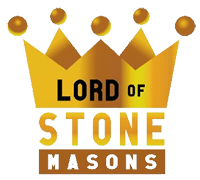From earth to elegance: How sandstone finds its place in your home
Lord of Stone
Have you ever wondered where your sandstone came from?
The slab in your courtyard. The feature wall behind your fireplace. The warm, grainy step leading to your front door. It didn’t just appear there. It started deep in the ground, forged over millions of years. At Lord of Stone, we work with sandstone from the ground up literally. This is the untold story of its journey: from quarry to home.
It all starts with the land
Long before it’s shaped, sold or installed, sandstone lies hidden beneath the surface. It forms as layers of sand compact over time, bonding through pressure and mineral rich water. This natural process takes thousands of years. The result is a dense yet workable rock with a unique pattern in every block.
Once a site is chosen, the sandstone extraction process begins. Not every location is suitable. Some sites are abandoned due to unstable ground or poor quality stone. When the conditions are right, the process of extracting sandstone moves into full swing.
Getting the first cut right matters
You don’t just dig up stone. There’s a method. The stone quarry process starts with removing overburden, layers of soil and rock that sit above the sandstone bed. Once exposed, the real work begins.
Special machines and tools are used to slice into the ground. Diamond tipped saws, hydraulic splitters and wire cutters help free the blocks without cracking them. Precision is everything. The first cut can decide the value of the entire block.
This stage is both science and craft. The people handling these machines, experienced quarrymen, read the stone like a map. They know when to press forward, and when to stop.
So, how is sandstone mined without damaging it?
The trick lies in patience. The quarry sandstone has to be coaxed out, not forced. Using controlled pressure and guided cutting, large blocks are removed intact. Mistakes here cost time and money.
Once free, each block is labelled and weighed. It’s then lifted out of the pit using cranes and transported to a processing site. From that moment on, the sandstone is no longer just rock, it’s a product in the making.
What happens after the quarry?
This is where sandstone suppliers like Lord of Stone come in. The raw blocks arrive at processing yards where each one is assessed again. Cracks, voids, or colour inconsistencies are flagged. The good ones continue.
Cutting begins. Slabs are formed using massive bridge saws. Each cut is planned based on what the end use will be, tiles, pavers, stone cladding or custom features. Slabs are then calibrated for thickness, honed, brushed, or split faced, depending on their future role.
Some customers prefer smooth finishes. Others want something rough and organic. The beauty of sandstone lies in its flexibility.
The middleman between nature and architecture
A sandstone supplier doesn’t just move blocks from one place to another. At Lord of Stone, we evaluate each slab for its visual appeal and structural quality. Clients want consistency, but also charm. Too much variation can be jarring. Too little can make the space feel dull.
We strike the balance. That’s why we work directly with the stone. We don’t just source it, we understand it.
How do you get sandstone from quarry to home without compromising it?
Transport is critical. A cracked slab doesn’t just waste money, it ruins design plans. We use reinforced packaging, padded stacking, and rigid handling rules. Forklifts, cranes and human hands move the stone multiple times before it gets to your project.
From quarry to home, sandstone must survive travel without losing its edges, colour or integrity. Every move matters.
Design comes alive in the final stage
Once it reaches your site, the sandstone becomes more than material. It turns into mood, texture, and statement. A backyard path. A bold front facade. An indoor wall that anchors the entire room.
Each installation brings out different tones. Light changes how sandstone looks. Morning brings warmth. Afternoon flattens it out. Evening makes it glow.
That’s why many people choose sandstone. It feels alive. It shifts with its surroundings.
Why is sandstone still popular today?
Because no two pieces are the same. And yet, every piece works together. That’s rare.
In modern design, where minimalism can feel cold, sandstone offers texture without clutter. It blends with steel, glass, timber, or even concrete. It’s timeless, but not dated.
From garden walls to pool surrounds, sandstone brings a quiet confidence to every build. It’s not loud, but it’s not forgettable either.
What makes a good sandstone supplier?
Experience, quality control and product knowledge. But more than that is vision. At Lord of Stone, we don’t just push stock. We help you make decisions based on your space, your climate, and your style.
Need a high-grip finish for outdoor steps? We’ll show you split faced samples. Want a soft, tactile surface for an indoor feature? Honed is your go-to.
Our advice is tailored. So is our sourcing. That’s what separates us from bulk resellers.
Let’s talk about sustainability
The sandstone industry is changing. Quarrying now follows strict guidelines to protect landscapes. Waste is reduced. Water is recycled. We choose quarry partners who follow ethical practices. That means no over mining, no shortcuts, and respect for local environments.
When you buy from Lord of Stone, you’re not just getting a product. You’re supporting better practices for a lasting future.
Closing the loop: Why this journey matters?
Understanding how sandstone is mined and processed gives you more than trivia. It adds value. You start to see the effort behind each piece. You appreciate the skill behind each cut. This isn’t just rock on a wall. It’s a story told in layers, lines and tones.
When sandstone makes its way from quarry to home, it carries something rare, authenticity.
